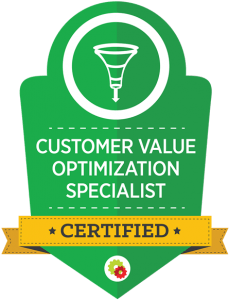Fall into SEO: How Seasonal Keywords Can Increase Your Visibility
As the autumn leaves begin to change, so do consumer search trends. Fall presents a unique opportunity for businesses to harness the power of seasonal keywords to boost their search engine visibility and drive more traffic. Whether it’s back-to-school shopping, Halloween decorations, or Thanksgiving recipes, consumers are actively searching for fall-related content. By integrating these seasonal keywords into your SEO strategy, you can tap into the increased demand and enhance your website’s rankings. This guide will explore how to leverage seasonal keywords to increase your visibility and make the most of the fall season.
SEO is a constantly evolving discipline, and one of the most important factors to consider is seasonality. Every season brings a change in consumer behavior, as people search for different products, services, and content depending on the time of year. For businesses, adapting to these changes through the use of seasonal keywords can significantly increase their online visibility and organic traffic. Fall, in particular, is a time filled with opportunities—from back-to-school shopping and fall fashion to Halloween and Thanksgiving preparations.
In this article, we’ll dive into how you can “fall” into SEO by incorporating seasonal keywords into your strategy, helping you stay relevant, rank higher, and capture more of the seasonal demand.
Why Seasonal SEO Matters
Seasonal SEO is the practice of adjusting your SEO strategy to align with changes in consumer behavior throughout the year. During different seasons, people search for specific products, activities, and services. Fall is no exception, with an influx of searches related to Halloween, Thanksgiving, fall decor, back-to-school supplies, and holiday shopping. Here’s why seasonal SEO is crucial:
- Align with Consumer Behavior: Fall prompts consumers to search for different things, and if your content reflects those changes, you’re more likely to capture relevant traffic.
- Increase Organic Traffic: By optimizing for seasonal keywords, you can rank higher for trending queries, leading to a surge in organic traffic during high-demand periods.
- Capitalize on Shopping Events: Major shopping events like Black Friday, Cyber Monday, and Halloween are in the fall. Optimizing your site for these events helps you take full advantage of the increase in purchasing activity.
- Stay Competitive: Many businesses ramp up their marketing efforts during seasonal peaks, making it critical to keep up with competitors through timely SEO optimizations.
What Are Seasonal Keywords?
Seasonal keywords are search terms that see a significant spike in popularity during specific times of the year. These keywords reflect the shifting needs and interests of consumers based on the time of year. For instance, in the fall, you might see an increase in searches for “Halloween costumes,” “pumpkin spice recipes,” or “Thanksgiving dinner ideas.”
Unlike evergreen keywords, which have consistent search volume throughout the year, seasonal keywords experience sharp increases and decreases in popularity. Identifying and targeting these keywords at the right time can lead to a major boost in search engine visibility.
Examples of Seasonal Keywords for Fall:
- Fall fashion trends
- Back-to-school supplies
- Halloween decorations
- Thanksgiving recipes
- Cozy fall outfits
- Pumpkin spice latte recipes
- Fall home decor
- Black Friday deals
How to Identify Fall Seasonal Keywords
The first step in leveraging seasonal keywords for your SEO strategy is identifying the right keywords to target. Seasonal keyword research is crucial for understanding which terms are trending in the fall and how you can incorporate them into your content.
1. Use Keyword Research Tools
Tools like Google Keyword Planner, SEMrush, Ahrefs, and Ubersuggest can help you discover seasonal keywords relevant to your business. These tools allow you to see historical data on keyword trends, search volumes, and competition levels, helping you prioritize the most valuable terms.
- Google Keyword Planner: Use it to find fall-specific keywords and track how search volumes fluctuate during the season.
- SEMrush: Offers insights into seasonal keyword trends and allows you to spy on competitors' strategies, including which fall-related terms they are targeting.
- Ahrefs: Provides keyword difficulty scores, seasonal search trends, and opportunities for long-tail keywords that may convert better during fall.
2. Analyze Competitor Keywords
Studying your competitors can provide valuable insights into which seasonal keywords are driving traffic to their websites. Tools like SpyFu and SEMrush allow you to analyze competitor keyword strategies and discover any seasonal keywords they might be ranking for. Look at their fall content, promotions, and landing pages to see which terms they’re optimizing for and consider adopting similar strategies.
3. Leverage Google Trends
Google Trends is an excellent tool for spotting seasonal keyword trends. It shows how interest in specific search terms changes over time, allowing you to identify when seasonal keywords start gaining popularity. For example, searches for “Halloween costumes” begin to spike in September, so you should start creating or optimizing content in late summer.
- Monitor search trends: Set up alerts for fall-related keywords and monitor when they start to rise in popularity.
- Regional trends: Google Trends also allows you to filter by location, helping you identify which fall trends are more popular in specific regions.
4. Target Long-Tail Keywords
Long-tail keywords are longer, more specific keyword phrases that tend to have lower competition but higher conversion rates. For fall, long-tail keywords might include phrases like “best pumpkin spice latte recipes for beginners” or “affordable Halloween costumes for toddlers.” These keywords reflect more precise search intent and can help you capture a more targeted audience.
- Lower competition: Long-tail keywords often have lower search volume but are less competitive, making it easier to rank.
- Higher intent: These keywords reflect a higher level of intent and often result in higher conversions since they match specific consumer needs.
Optimizing Your Content for Fall Seasonal Keywords
Once you’ve identified your seasonal keywords, the next step is to optimize your content accordingly. This involves updating existing content, creating new fall-themed content, and ensuring your site is aligned with fall consumer trends.
1. Update Existing Content with Seasonal Keywords
If you already have content that performs well, you can update it to reflect fall-related keywords. For example, if you have a popular blog post on “healthy dinner recipes,” consider adding a section on “healthy fall dinner recipes” that highlights seasonal ingredients like squash or pumpkin.
- Re-optimize blog posts: Incorporate seasonal keywords into existing blog posts, product descriptions, and landing pages.
- Update meta tags: Revise your meta titles and descriptions to include fall keywords, helping improve click-through rates during the season.
- Internal linking: Link to seasonal landing pages from high-traffic evergreen content to direct more visitors toward fall-themed products or posts.
2. Create New Fall-Themed Content
Creating fresh content that specifically targets fall keywords is essential for capturing seasonal traffic. Develop blog posts, guides, and landing pages that address popular fall trends and consumer needs.
- Fall-related blog posts: Write about seasonal topics like “How to Decorate Your Home for Fall,” “Top 10 Fall Fashion Essentials,” or “Best Halloween Party Ideas.”
- Holiday shopping guides: Create gift guides for Halloween or Thanksgiving, such as “Best Gifts for Fall Enthusiasts” or “Thanksgiving Hostess Gift Ideas.”
- Product-focused content: If you run an e-commerce site, create product landing pages that feature fall collections, like “Cozy Fall Sweaters” or “Halloween Decorations.”
3. Optimize for Featured Snippets
Featured snippets are the highlighted search results that appear at the top of Google’s SERPs, often referred to as “position zero.” These can significantly boost your visibility, especially for seasonal keywords. To optimize for featured snippets, structure your content in a way that answers common fall-related questions.
- FAQs and lists: Create content that answers fall-related questions like “When is the best time to buy Halloween costumes?” or “How do you make pumpkin spice at home?” These types of content are more likely to be pulled into featured snippets.
- Use headers: Organize your content with clear headings (H2s and H3s) that answer common questions related to fall trends, making it easier for Google to extract relevant information.
SEO Strategies to Boost Visibility During the Fall Season
Beyond keyword optimization, there are several other SEO strategies you can implement to increase your visibility during the fall season.
1. Local SEO for Fall Events
If your business serves a local market, fall events like festivals, Halloween parties, and Thanksgiving gatherings present unique SEO opportunities. Optimizing for local search ensures you capture consumers looking for nearby fall events or seasonal activities.
- Optimize Google My Business: Ensure your Google My Business profile is updated with fall hours, promotions, and event information. Add seasonal photos and encourage customers to leave reviews.
- Local keywords: Incorporate location-specific keywords like “fall festivals near [city]” or “best Halloween stores in [location]” into your content and meta tags.
- Create event pages: If your business is hosting or participating in local fall events, create dedicated landing pages with details, schedules, and keywords optimized for local search.
2. Optimize for Mobile Users
Mobile searches surge during the fall season, especially as people browse for Halloween costumes, Thanksgiving recipes, and fall decor on the go. Ensuring your site is optimized for mobile users can lead to higher engagement and conversions.
- Responsive design: Make sure your website is fully responsive and adapts smoothly to different screen sizes.
- Improve site speed: Use tools like Google PageSpeed Insights to test your site’s loading speed on mobile devices. Slow-loading pages can hurt your rankings and increase bounce rates.
- Simplify navigation: Ensure that your mobile site is easy to navigate, with clear menus and clickable buttons, making it easy for users to find fall-related content or products.
3. Boost Page Speed for Fall Traffic Spikes
With the increase in traffic during the fall season, especially around events like Black Friday and Cyber Monday, your site needs to be ready to handle the influx. Slow page speeds can negatively impact your rankings and user experience.
- Use a Content Delivery Network (CDN): A CDN helps distribute your content globally, reducing load times for users no matter their location.
- Compress images: Large image files can slow down your page. Use tools like TinyPNG or ImageOptim to compress images without sacrificing quality.
- Enable browser caching: Caching helps store copies of your site’s files locally on users’ devices, improving load times for repeat visitors.
Measuring the Success of Your Fall SEO Efforts
To ensure your fall SEO strategy is effective, it’s important to track your performance and make adjustments as needed.
1. Monitor Keyword Rankings
Use tools like Ahrefs, SEMrush, or Moz to track the rankings of your seasonal keywords. Pay close attention to how your rankings change over the course of the fall season and adjust your content if certain keywords aren’t performing as expected.
2. Analyze Organic Traffic
Check your Google Analytics account to see how your seasonal content is performing in terms of organic traffic. Look for spikes in traffic around key events like Halloween or Thanksgiving and identify which pages are driving the most visits.
3. Track Conversions
Ultimately, the goal of your fall SEO efforts is to increase conversions. Track the number of leads, sales, or sign-ups generated from your seasonal pages. If conversion rates are low, consider optimizing your CTAs or improving the user experience.
Common Mistakes to Avoid When Using Seasonal Keywords
While using seasonal keywords can be highly effective, it’s important to avoid common pitfalls that could limit your success.
- Starting Too Late: SEO takes time to deliver results, so start optimizing your content well before fall. If you wait until October to publish Halloween-related content, you may miss the opportunity to rank.
- Keyword Stuffing: Don’t overuse seasonal keywords to the point where it impacts the readability of your content. Focus on naturally incorporating keywords into high-quality content.
- Neglecting Evergreen Content: While seasonal content is important, don’t neglect your evergreen content. Continue updating and optimizing long-lasting content that can generate traffic year-round.
FAQs
What are seasonal keywords?
Seasonal keywords are search terms that see a significant increase in search volume during specific times of the year, such as “Halloween costumes” or “Thanksgiving recipes” during the fall season.
Why are seasonal keywords important for SEO?
Seasonal keywords help you capture relevant traffic by aligning your content with current consumer search trends. Optimizing for these keywords can increase visibility, drive organic traffic, and boost conversions during high-demand periods.
When should I start optimizing for fall seasonal keywords?
You should start optimizing for fall seasonal keywords in late summer (July-August). This gives your content time to rank in search results before the peak of the fall season.
How do I find fall seasonal keywords?
Use tools like Google Keyword Planner, Ahrefs, SEMrush, and Google Trends to discover fall-related keywords. Look for trends in search volume and prioritize long-tail keywords that align with fall consumer behavior.
How do I optimize my content for seasonal keywords?
Update existing content with seasonal keywords, create new fall-themed blog posts and product pages, and optimize meta tags and titles to include fall-related terms. Ensure your content addresses the specific needs and interests of fall shoppers.
Conclusion
Incorporating seasonal keywords into your SEO strategy is one of the most effective ways to increase your visibility and capture high-intent traffic during the fall season. From back-to-school shopping and Halloween to Thanksgiving and early holiday sales, fall is filled with opportunities to connect with your target audience. By conducting thorough keyword research, optimizing your content, and enhancing your site’s performance, you can ensure that your business is well-positioned to succeed this fall.











